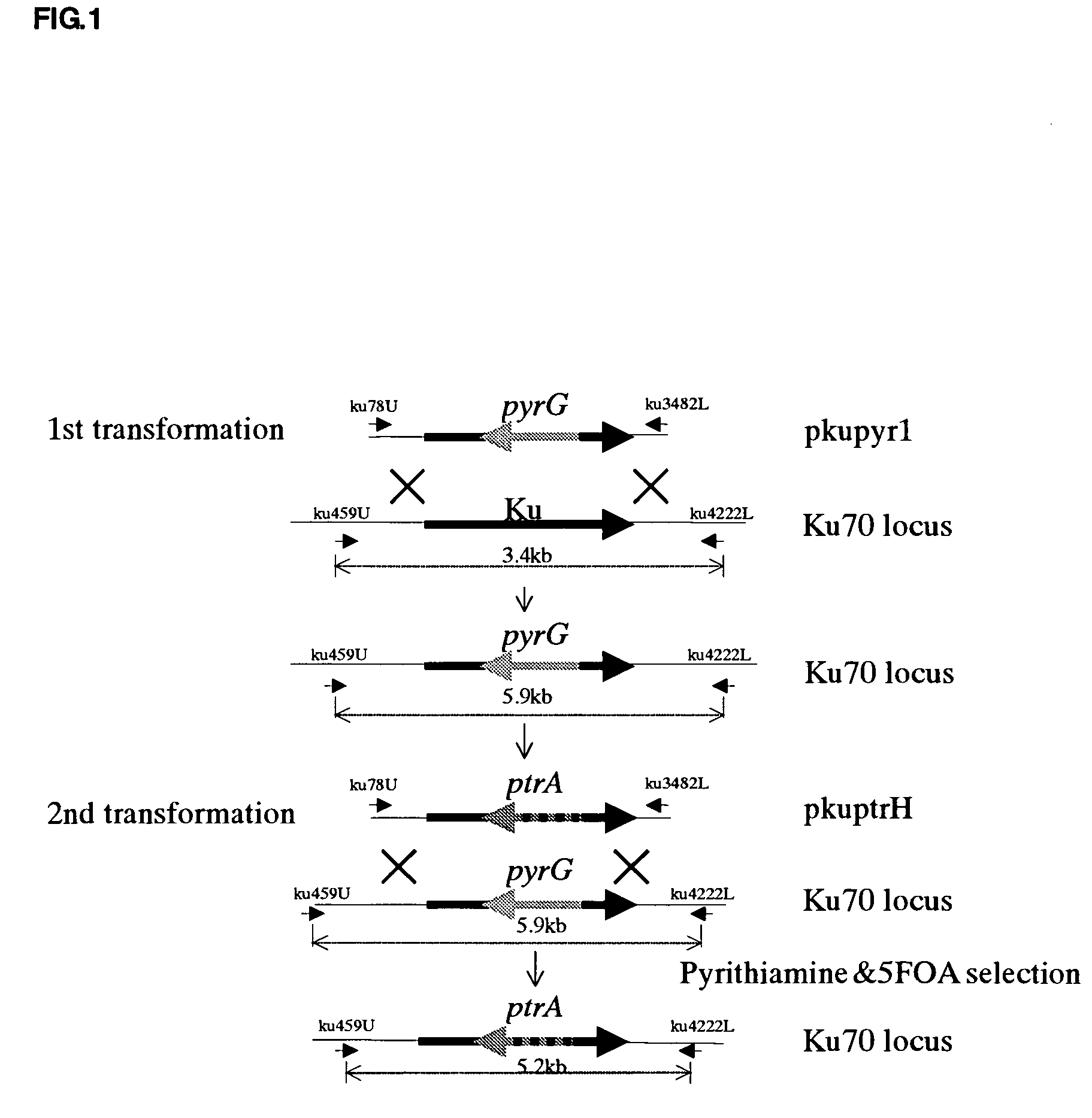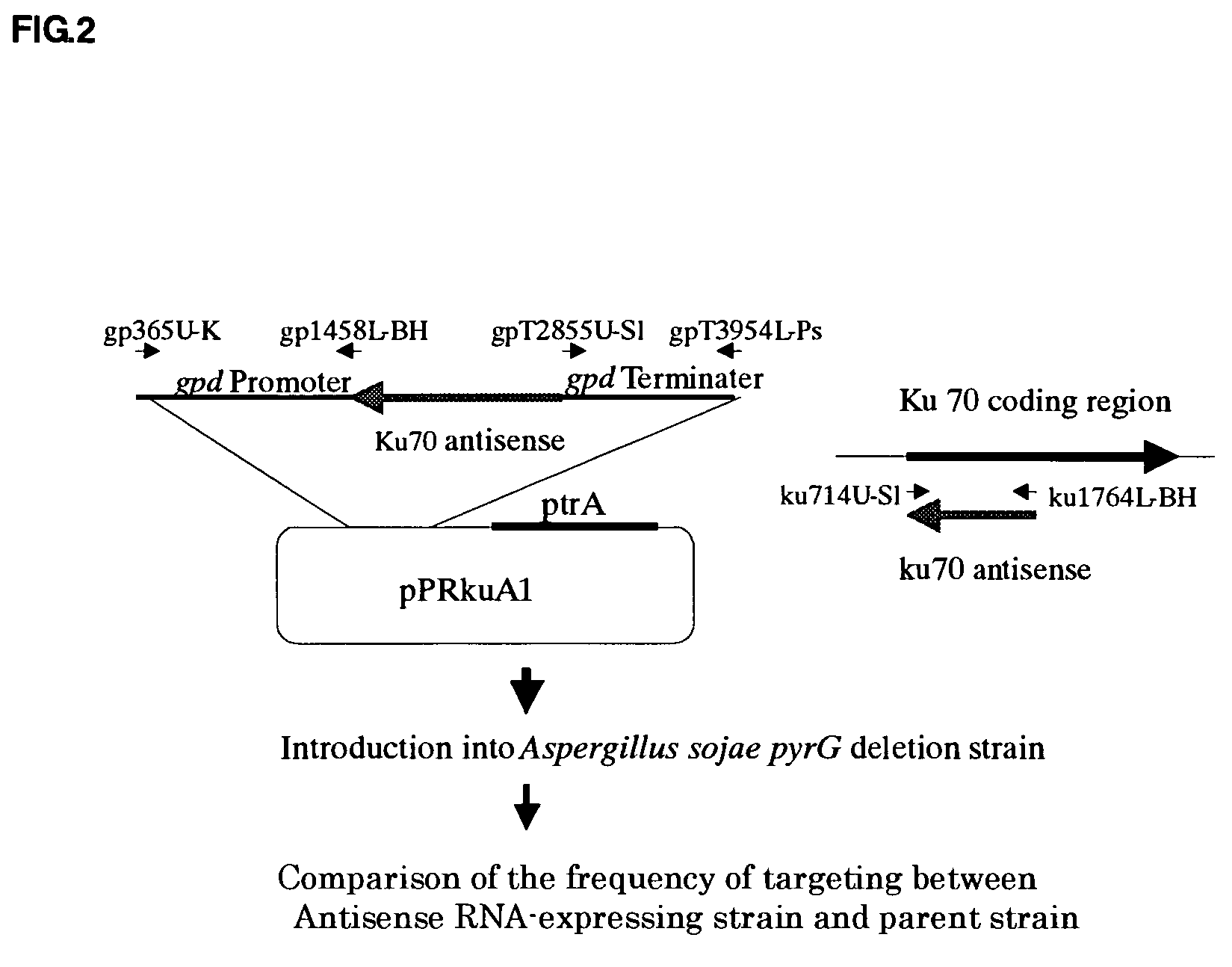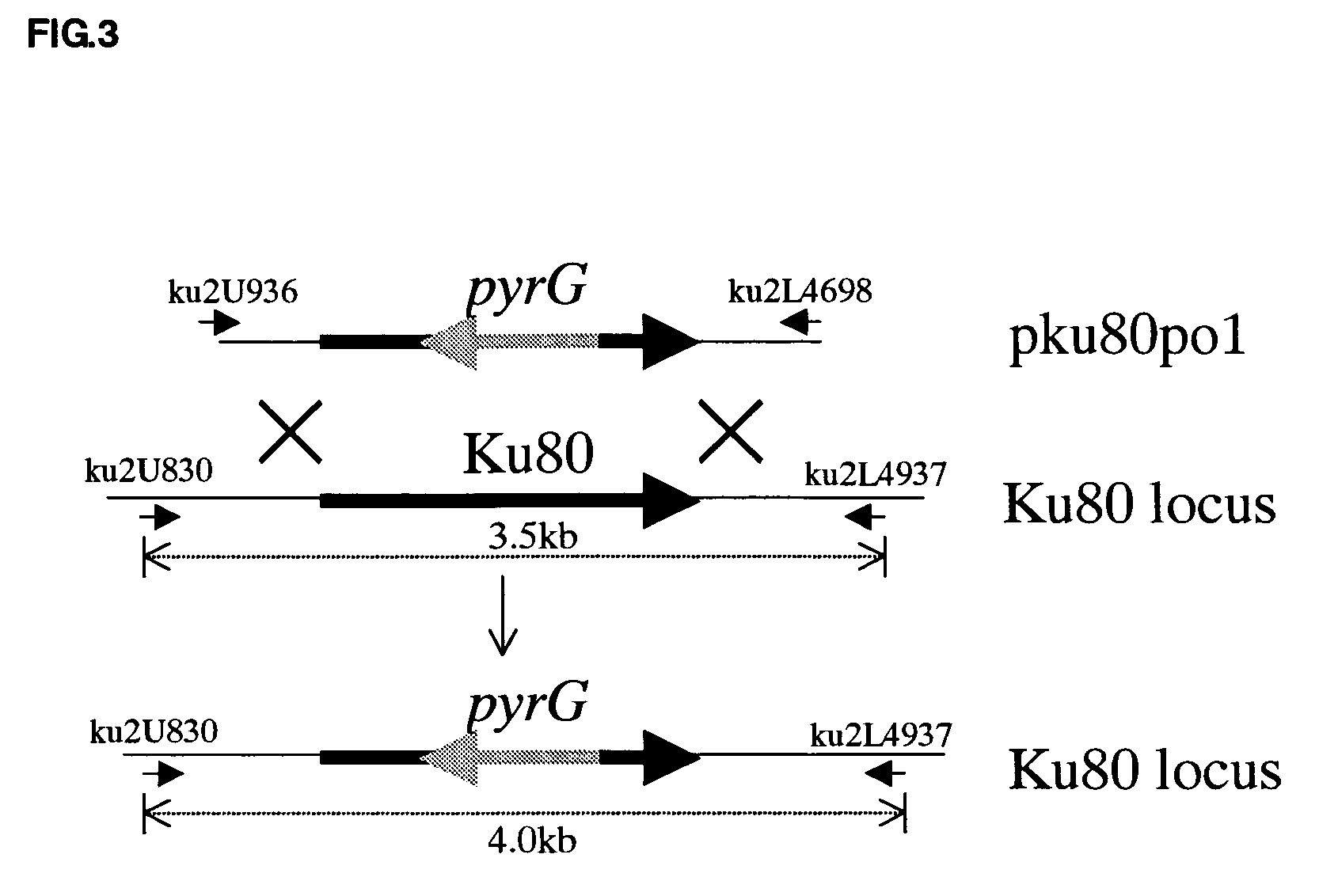Transformant having an increased frequency of homologous recombination
a technology of recombination and transformant, which is applied in the field of transformant, can solve the problems of not having any actual, being virtually impossible to predict, and not being able to be produced, and achieves the effects of suppressing growth, reducing spore-forming property, and increasing the frequency of homologous recombination
- Summary
- Abstract
- Description
- Claims
- Application Information
AI Technical Summary
Benefits of technology
Problems solved by technology
Method used
Image
Examples
example 1
[0082] A ku70-disruption strain was prepared and the effect of ku70-disruption on the frequency of targeting (homologous recombination) was examined.
[0083] Thus, PCR was performed using said ku70-disruption vector pkupyr1 as a template, and primers ku78U and ku3482L to amplify a DNA fragment, which was then used for transformation of the pyrG deletion strain of Aspergillus sojae. Genomic DNA was obtained from the transformant regenerated on 1.2M sorbitol CZ medium containing 0.5% agar, and subjected to PCR using primers kuU459-kuL4222. As a result, out of 99 transformants was obtained one ku gene-disruption strain that had an amplified fragment with a length shifted from 3.4 kb to 5.9 kb (FIG. 4). The resulting one strain was then transformed in a conventional way with a fragment obtained by amplification of the vector pkuptrH wherein pyrG had been replaced by ptrA with use of primers ku78U-3482L. After the resulting transformants were transferred to 2 mg / ml-5FOA-CZ, 5FOA-resistant...
example 2
[0085] The frequency of gene disruption with respect to the ku80 gene was then examined using the Δku70 strain. PCR was done using the ku80-disruption vector pku80 pol (FIG. 3) as a template and primers ku2U936Xb-ku2L4698K to amplify a fragment for gene disruption. Aspergillus sojae pyrG deletion strain I-6 and the ku70-disruption strain ASKUPTR8 were transformed with the resulting fragment. PCR was done using the genomic DNA extracted from the transformant as a template and primers ku2U830-ku2L4937. As a 3.5 kb band in the parent strain shifted to 4.0 kb band in the gene-disruption strain, the disruption strain could be easily identified (FIG. 9). It was confirmed that the ku80 gene was disrupted in only one strain out of 42 I-6 strains with disruption frequency of 2.4%, and in 18 strains out of 25 ku70-disruption (ASKUPTR8) strains with an increased disruption frequency of 72% (Table 1C). An arm length of homologous region in the above homologous recombination was 1.0 kb.
example 3
[0086] A ku70 antisense RNA-expressing strain was prepared and its effect on the frequency of homologous recombination was examined.
[0087] Thus, the ku70 antisense RNA-expressing vector, pRkuA1 in a circular state was introduced into Aspergillus sojae pyrG deletion strain I-6 to obtain the transformants (kuA1, kuA2, kuA3 and kuA4) according to the present invention. Selection of the transformants was done with prythiamine. The introduction of the construct for expressing the ku70 antisense RNA was confirmed by PCR and Southern hybridization. Disruption experiment of areA's C-end was carried out using these four strains and a vector arePXB (Takahashi et al., 2004). The four strains were transformed with arePXB vector cut with NotI-Xho, and resulting transformants were transferred to KClO3-mono-methylammonium (100 mM)-CZ medium. The number of the strains with suppression of growth was counted. As a result, while the disruption of areA's C-end was observed at a ratio of about 0 or 0.7...
PUM
| Property | Measurement | Unit |
|---|---|---|
| Frequency | aaaaa | aaaaa |
Abstract
Description
Claims
Application Information
 Login to View More
Login to View More - R&D
- Intellectual Property
- Life Sciences
- Materials
- Tech Scout
- Unparalleled Data Quality
- Higher Quality Content
- 60% Fewer Hallucinations
Browse by: Latest US Patents, China's latest patents, Technical Efficacy Thesaurus, Application Domain, Technology Topic, Popular Technical Reports.
© 2025 PatSnap. All rights reserved.Legal|Privacy policy|Modern Slavery Act Transparency Statement|Sitemap|About US| Contact US: help@patsnap.com



